Olympus PEN E-P5 Review
Olympus PEN E-P5 Performance - How well does it take pictures?
Performance starts with image quality, which is the criteria used as the foundation of our digital camera ratings. Ergonomic issues may get in the way, but in the end, image quality counts the most. For an ILC, image quality greatly depends on the lens used. While color, noise, exposure and dynamic-range are properties of a camera, distortion, vignetting and chromatic aberrations are properties of the lens. Sharpness and contrast depend on the weakest link. That is, a camera cannot capture more details than a lens lets through. Conversely, it is quite possible for a lens to transmit more details than a sensor can capture.
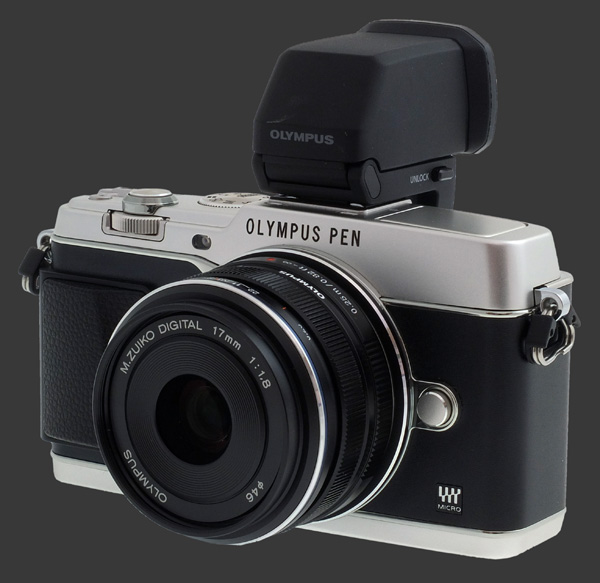
Image Noise & Details
The Olympus PEN E-P5 delivers excellent image quality and currently earns the highest score for a Micro Four-Thirds camera at DxOMark, matched only by the Olympus PEN E-PL5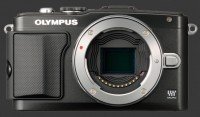
Olympus PEN E-PL5 and E-PM2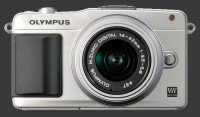
Olympus PEN E-PM2. Among mirrorless cameras though, it gives in to the laws of physics which dictate that larger sensors can deliver better image-quality. This is exactly why the best-ranked mirrorless is full-frame, followed by recent APS-C sensor ones.
Image-quality of the E-P5 remains excellent by any measure and, practicalities balance out because the Four-Thirds sensor allows for smaller lenses and therefore less bulk. This is exactly where Olympus delivers on its promise: High image-quality, small size, finally together in a versatile and mature system.
Image noise is extremely low until ISO 800 and barely there at 1600 where it remains usable for relatively large prints. ISO 3200 shows visible noise with has a slight effect on the finest details. At ISO 6400, fine details get eaten by noise and maximum print size is affected. On 12" x 9" prints, ISO 6400 remains extremely usable with fine noise only visible upon close inspection.
ISO 12800 shows significant noise with reduced detail, which is a step better than the OM-D E-M5. This makes usable mid-size prints. ISO 25600 is more noisy with less detail yet it delivers usable 4" x 6" prints.
There are three levels of noise-reduction available. NR can also be turned off entirely which avoids increased softness at high sensitivities. Best results are obtained with the NR Off and Sharpness at +1. Anything higher shows clear sharpening artifacts on this camera.
Color & White Balance
The PEN E-P5 struggles with color accuracy. There are lots of Picture Modes but none produce realistic colors across the spectrum. The best image colors are obtained in Natural style with Saturation dialed down to -1. The red channel remains too high regardless of settings. This is obviously avoidable for those who shoot RAW.
Automatic While-Balance is excellent. It deals well with a variety of conditions including typical indoor lighting. There are tons of options for the rare cases when AWB has difficulty or to get consistent colors between shots. Custom WB is easy to use on this camera and renders whites almost neutral.

Exposure
This digital camera has an excellent multi-segment metering system. It is overexposes only when rather small and bright highlights are present in the scene. Generally, exposures come out perfectly usable without needing any exposure-compensation. Low contrast scenes are exposed towards the mid-tone which makes them look natural.
It is important to know that the LCD clips extreme highlights which may still be correctly captured. This happens when adjusting the highlight tone-curve too. Differences are barely noticeable on the LCD but images are in fact captured differently. Changes to the shadow tone-curve are much easier to see. When in doubt, the Playback histogram must be checked. The Live-Histogram is only truly accurate in M mode.

Auto Focus
The Olympus PEN E-P5 has a fast Contrast-Detect autofocus system. This matches the performance of current members of the PEN family and the OM-D E-M5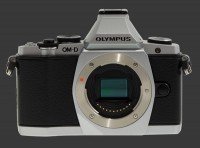
Olympus OM-D E-M5 which compares well with mid-range DSLRs. Focus accuracy is extremely high and this camera rarely confirms focus incorrectly. Contrast-Detect AF never suffers from front or back focus issues, which is why no calibration is needed.
With most Micro Four-Thirds lenses, focus is done via a fly-by-wire ring around the lens-barrel. The E-P5 keeps up well with no perceptible lag. In DMF mode, a slight turn of the focus-ring shift into manual focus. Because the ring is fly-by-wire, the E-P5 can reverse the direction for focusing except for those few lenses with a mechanical focus-ring.
Speed
The E-P5 is a rather responsive digital camera. Olympus matched the speed of the OM-D E-M5 with a 9 FPS continuous drive. Very few DSLRs can shoot that fast because they need tougher shutter curtains and mirror mechanisms.
In use, the Olympus PEN E-P5 rarely holds back the photographer. Buttons and dials all respond instantly. The following measurements characterize its performance:
- Power-On: Under 1½s second. Average.
- Power-On to First-Shot: 1½s seconds. Good.
- Autofocus: ¼s on good to moderate light. Rarely more than ½s, even in low light. Excellent.
- Shutter-lag: Nearly instant with under ¼s blackout. Excellent.
- Shot-to-shot: Just under ½s. Class-leading.
- Playback: ½s to enter, instant to exit. Excellent.
- Power-Off: Nearly instant second. Very good.
- Video: 1s to start and 1s to stop. Average.
These are the best number seen from a Micro Four-Thirds camera, besting the OM-D E-M5 in several key areas. The lag and blackout are so quick that the E-P5 is one of the few mirrorless cameras usable for action photography. Autofocus performance is very consistent and slows down less in low-light than most digital cameras, including DSLRs.
The 9 FPS continuous drive with focus locked on the first frame works well. The display even manages to keep close to the action, something that few mirrorless cameras manage. The only limitation is that this camera has a shallow buffer of 9 frames, so it stops shooting after just one second.
The Olympus PEN E-P5 is powered by a proprietary Lithium-Ion battery which provides 330-shots per charge with 50% flash. This is below average among mirrorless cameras yet should be enough for a day of shooting. Performance can be extended by not using the built-in flash, of course.
Olympus PEN E-P5 Conclusion

The Olympus PEN E-P5 is an impressive Micro Four-Thirds camera which delivers excellent image-quality and performance in a relatively compact and very sturdy body. Finding its spot at the top of the PEN range, the E-P5 exceeds the higher-end OM-D E-M5 in key areas, only lacking that one's built-in viewfinder and weather-seals.
Image quality is top-notch with low noise until ISO 1600 and usable images up to 12800 for mid-size prints and 25600 for small ones. Exposure and white-balance are excellent with only color accuracy being somewhat off. This puts the E-P5's performance close to that of recent DSLRs.
Speed is class-leading with a very fast autofocus system which stays quick in low-light. The shutter-lag and black-out times are simply superb, while the display even keeps up close behind the 9 FPS continuous drive. Shot to shot speeds are also class-leading, making this mirrorless usable for action photography.
There is very little to complain about the E-P5. The interface could use some improvement to make it less error-prone and the display would be better if it was Exposure-Priority all the time. Battery-life could be longer but that is not a problem with an extra battery.
This camera is really close to the mirrorless ideal, combining performance and size with a capable feature set along with a versatile system. The Micro Four-Thirds system has more native lenses than any other and there are optics suitable for most needs and quality levels. The Olympus PEN E-P5 truly manages to show what the Micro Four-Thirds system is capable of and is well-worth its price.
 |
Please Support Neocamera
All information on Neocamera is provided free of charge yet running this website is a huge endeavor. Purchases made via affiliate links found throughout the site help keep it running and up-to-date. There is no additional cost to you, so please consider buying via these links to our affilates:
If you found any information on this site valuable and did not purchase via our affiliate links, please considering donating via PayPal:
Any amount will be greatly appreaciated. Thank you for your support!
Olympus E-P5 Highlights
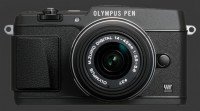
Sensor-Size: 17 x 13mm

Actual size when viewed at 100 DPI
| 16 Megapixels Mirrorless | ISO 100-25600 |
| Micro Four-Thirds Mount 2X FLM | Shutter 1/8000-60s |
| 5-Axis Built-in Stabilization, 5-Stop Improvement | Full manual controls, including Manual Focus |
| 0.50" Optional EVF 2.4 Megapixels (0.74X) | Custom white-balance with 2 axis fine-tuning |
| 2 Axis Digital Level | Spot-Metering |
| Built-in Dust Reduction | Hot-Shoe |
| 9 FPS Drive, 9 Images | Stereo audio input |
| 1920x1080 @ 30 FPS Video Recording | Lithium-Ion Battery |
| 3" LCD 1 Megapixels | Secure Digital Extended Capacity |
Updates
2024.11.18

Best 2024 Photography Gifts for Every Budget
Great gifts for photographers and photo enthusiasts selected for every budget among the best products of 2024.
2024.08.07

Eye Protection Tips for Professional Photographers
The four main considerations for professional photographers regarding eyewear.
2024.07.14

Fujifilm X100VI Review
Flagship fixed-lens compact digital camera with a 40 MP sensor and Image-Stabilization, a first for the series. Retro design featuring dual control-dials, plus direct ISO, Shutter-Speed and EC dials. Its hybrid viewfinder can switch between EVF and OVF mode.
2024.05.09

Fujifilm GFX100 II Review
Flagship 102 Megapixels Medium-Format Mirrorless Digital Camera with 8-Stop 5-Axis IBIS, 8 FPS Drive, 8K Video and 400 MP Super-Resolution capture in a weatherproof and freezeproof body with dual control-dials and dual memory-card slots.
2024.04.03

Fujifilm X-T5 Review
Newest Fujifilm flagship boasting a 40 MP APS-C sensor, 5-axis IBIS with 7-stop efficiency, 15 FPS continuous drive, 6.2K Video capture, dual control-dials and dual SDXC UHS-II slots in a sturdy weatherproof and freezeproof body.
2023.11.20

Best Digital Cameras of 2023
Find out which are the Best Digital Cameras of 2023. All the new Mirrorless Digital Cameras from entry-level to high-end professional.
2023.07.10

Fujifilm X-H2 Review
40 Megapixels APS-C Hybrid Mirrorless Digital Camera with 7-stop IBIS. Fastest shutter ever and 8K video capture. Large builtin EVF with 0.8X magnification and 5.8 MP, plus an Eye-Start Sensor. Packed with features and large number of controls in a weatherproof and freezeproof body.
2023.05.07

Sony FE 20-70mm F/4G Review
Review of the unique Sony FE 20-70mm F/4G lens. The optical zoom of this lens spans ultra-wide-angle and medium focal-length coverage, making it one of the most versatile Full-Frame lenses on the market.
2023.01.15

Huion Inspiroy Dial 2 Review
Review of the Huion Inspiroy Dial 2 tablet, a medium sized drawing surface with dual dials and customizable buttons. Connects via USB-C or Bluetooth 5.0 with Windows, Linux and Android support.
2022.12.08

How to Pack for a Photo Trip
Find out how to pack for a travel photography trip, carry your gear safely while meeting airline regulations.
2022.11.13

Best Digital Cameras of 2022
The best digital cameras of 2022. A short list of the most outstanding models in their respective categories. Choose one for yourself or as a gift.
2022.09.21

Pentax DA* 60-250mm F/4 SDM Review
Review of the Pentax DA* 60-250mm F/4 SDM, the constant-aperture telephoto zoom with the highest zoom-ratio on the market.












